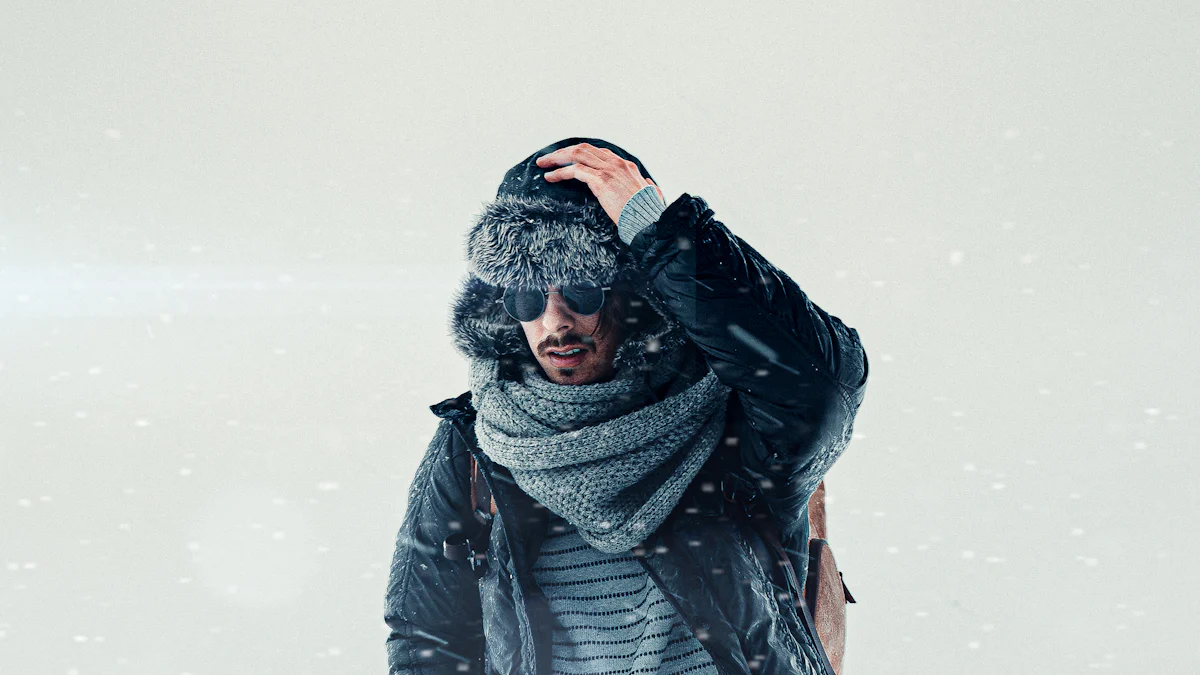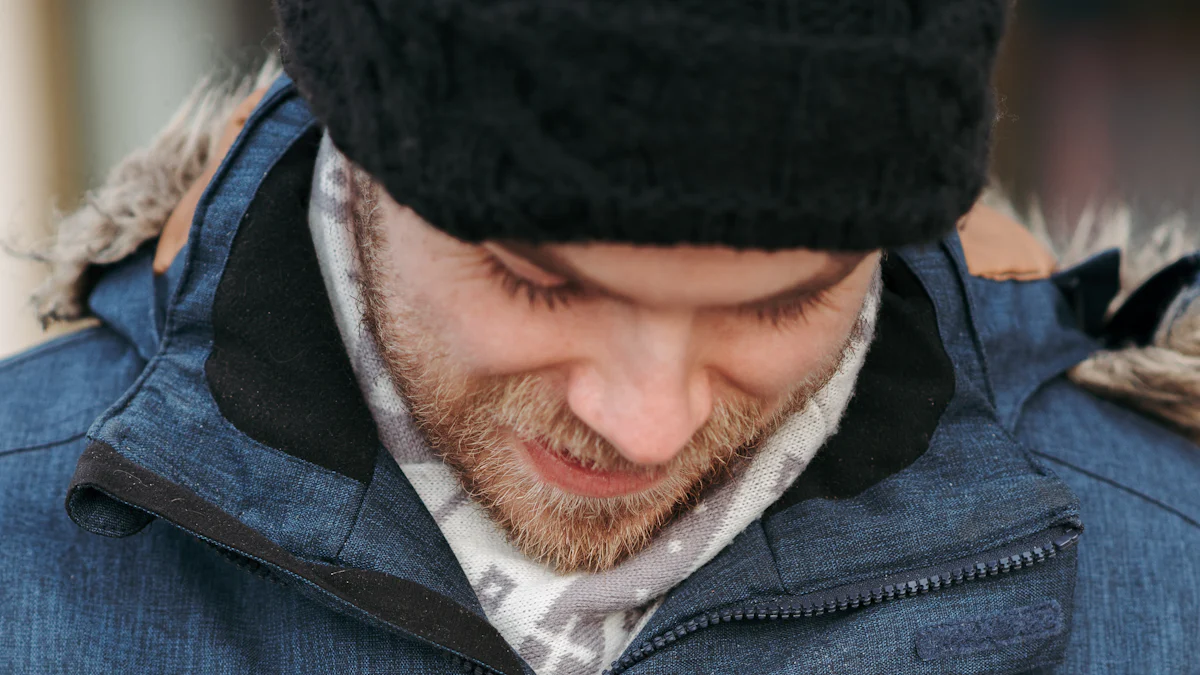
Staying Toasty: Heated Vests vs. Traditional Warm Clothing
When the chill of winter sets in, you face a choice: warm clothing or a heated vest? Picking the right gear is crucial for staying cozy. Traditional warm clothing, like thick coats and woolen sweaters, has been a staple for generations. However, heated vests have surged in popularity, offering targeted warmth to your core. They use advanced heating elements to keep you snug without the bulk. This blend of warmth and mobility makes them a versatile option. As sales of heated apparel soar, it's clear that more people are exploring these innovative solutions for staying warm.
Understanding the Basics of Warm Clothing and Heated Vests

Operation Principles
How Warm Clothing Works
Warm clothing keeps you cozy by trapping your body heat. Materials like wool, down, and fleece create layers of insulation. These layers prevent cold air from reaching your skin and keep warm air close to your body. When you wear a thick coat or a woolen sweater, you're essentially wrapping yourself in a barrier against the cold. This method has been effective for generations, providing reliable warmth during chilly weather.
How Heated Vests Work
Heated vests take a different approach. They use advanced heating elements to generate warmth. These elements, often made of wire or composite fiber, are strategically placed around core areas like your chest and back. A rechargeable battery powers these elements, passing an electrical current through them to produce heat. You can adjust the temperature settings to suit your comfort level. This targeted heating ensures that your core stays warm, even in cold conditions. The lightweight design of heated vests allows for easy layering, making them a practical choice for outdoor activities.
Materials Used
Common Materials in Warm Clothing
Traditional warm clothing relies on materials known for their insulating properties. Wool is a popular choice because it traps heat effectively and wicks moisture away from your skin. Down, often used in puffer jackets, provides excellent warmth without adding much weight. Fleece offers softness and comfort, making it a favorite for casual wear. These materials work together to create garments that keep you warm and comfortable.
Materials in Heated Vests
Heated vests use high-quality materials like nylon or polyester for the outer shell. These materials are often water-resistant, providing protection against the elements. Inside, a fleece lining adds softness and comfort. The heating elements are embedded within the insulated fill, ensuring even heat distribution. The combination of durable materials and advanced technology makes heated vests a reliable option for staying warm. With adjustable heat settings and rechargeable batteries, they offer both practicality and comfort for those chilly days.
Comparing Warmth and Comfort

Warmth Retention
Effectiveness of Warm Clothing
When it comes to warmth retention, traditional warm clothing has been a reliable choice for generations. Thick coats, woolen sweaters, and layered outfits trap your body heat effectively. Materials like wool and down create insulating layers that keep cold air out and warm air in. You might find these garments perfect for everyday use, especially when you're outdoors in chilly weather. They provide consistent warmth, making them a staple in winter wardrobes.
Effectiveness of Heated Vests
Heated vests, on the other hand, offer a modern twist on staying warm. They provide targeted warmth to your core, which can be more efficient than traditional methods. With adjustable heat settings, you can customize the level of warmth to suit your needs. This feature makes heated vests versatile for various outdoor activities. Whether you're hiking or just taking a walk, these vests keep you cozy without the bulk. Their lightweight design allows for easy layering, enhancing mobility while maintaining core warmth.
Comfort and Fit
Comfort in Traditional Clothing
Traditional warm clothing often prioritizes comfort. Wool and fleece materials feel soft against your skin, providing a cozy experience. However, the bulkiness of some garments might restrict movement. You may find yourself bundled up, which can be less convenient for active pursuits. Despite this, the comfort of a snug sweater or a well-fitted coat can't be underestimated. They offer a familiar warmth that many people appreciate.
Comfort in Heated Vests
Heated vests excel in comfort and fit. Made from breathable materials, they ensure you stay warm without overheating. The design focuses on functionality, allowing for a snug fit that doesn't hinder movement. You can wear them under other clothing, making them ideal for layering. This flexibility means you can enjoy warmth without sacrificing comfort. Whether you're engaging in outdoor sports or simply running errands, heated vests adapt to your lifestyle.
Practical Considerations
Occasion and Use
Best Situations for Warm Clothing
You might find traditional warm clothing perfect for everyday activities. Thick coats and woolen sweaters work well for leisurely walks or casual outings. They provide consistent warmth, making them ideal for situations where you don't need to move around much. If you're planning a day at the park or a stroll through the city, these garments offer reliable comfort.
Best Situations for Heated Vests
Heated vests shine in scenarios requiring mobility and flexibility. They're great for outdoor sports like hiking or skiing, where you need to stay warm without feeling bulky. The adjustable heat settings let you tailor the warmth to your activity level. Whether you're fishing or hunting, heated vests keep your core warm during long periods of stillness. Their lightweight design makes them easy to layer, enhancing your freedom of movement.
Style and Aesthetics
Style Options in Warm Clothing
Warm clothing offers a wide range of styles. You can choose from classic wool coats, trendy puffer jackets, or cozy fleece pullovers. These options allow you to express your personal style while staying warm. Whether you prefer a sleek, modern look or a more traditional appearance, there's something for everyone.
Style Options in Heated Vests
Heated vests focus on functionality but don't skimp on style. Available in various colors and designs, they can complement your wardrobe effortlessly. You can wear them under a jacket or as a standalone piece. Their sleek design ensures you look stylish while enjoying the benefits of targeted warmth.
Price and Value
Cost of Warm Clothing
Traditional warm clothing varies in price. You might find affordable options at local stores or invest in high-end brands for better quality. Wool and down garments often come with a higher price tag due to their insulating properties. However, they offer long-lasting warmth, making them a valuable addition to your winter wardrobe.
Cost of Heated Vests
Heated vests tend to be more expensive due to the technology involved. They include rechargeable batteries and advanced heating elements, which contribute to the cost. Despite the initial investment, they offer great value with their customizable warmth and versatility. For those who prioritize comfort and convenience, heated vests can be a worthwhile purchase.
Environmental and Safety Aspects
Environmental Impact
Sustainability of Warm Clothing
When you think about sustainability, traditional warm clothing often comes to mind. Materials like wool and down are natural and biodegradable. Wool, for instance, is renewable and can be recycled. Down, sourced responsibly, offers excellent insulation with minimal environmental impact. Choosing garments made from these materials helps reduce your carbon footprint.
Sustainability of Heated Vests
Heated vests, while innovative, present different sustainability challenges. They rely on synthetic materials like nylon and polyester, which aren't biodegradable. However, many brands focus on durability, ensuring these vests last longer and reduce waste. Rechargeable batteries also minimize disposable battery use. When selecting a heated vest, look for brands committed to eco-friendly practices.
Safety Concerns
Safety in Warm Clothing
Warm clothing generally poses minimal safety risks. Natural fibers like wool and cotton are breathable and safe for most skin types. However, always check for allergies to specific materials. Proper care and maintenance ensure your garments remain safe and effective.
Safety in Heated Vests
Heated vests are designed with safety in mind. They use low-voltage heating elements, reducing the risk of burns or shocks. Many vests include safety features like automatic shut-off and temperature control. According to the Venustas Official Blog, misconceptions about heated vests causing heart problems lack scientific backing. Responsible use is key. Avoid wearing wet vests to prevent electrical hazards, as noted by the Travel and Leisure journal. Always buy from reputable brands that adhere to safety standards.
Choosing between warm clothing and heated vests depends on your needs. Here's a quick recap to help you decide:
- Warm Clothing: Offers all-over warmth with materials like wool and down. Ideal for those who prefer traditional comfort and style.
- Heated Vests: Focuses on core warmth, providing mobility and adjustable heat settings. Perfect for outdoor enthusiasts who value flexibility.
Consider your activities, budget, and style preferences. Whether you opt for the cozy embrace of warm clothing or the innovative warmth of a heated vest, make sure it suits your lifestyle and keeps you comfortable in the cold.
